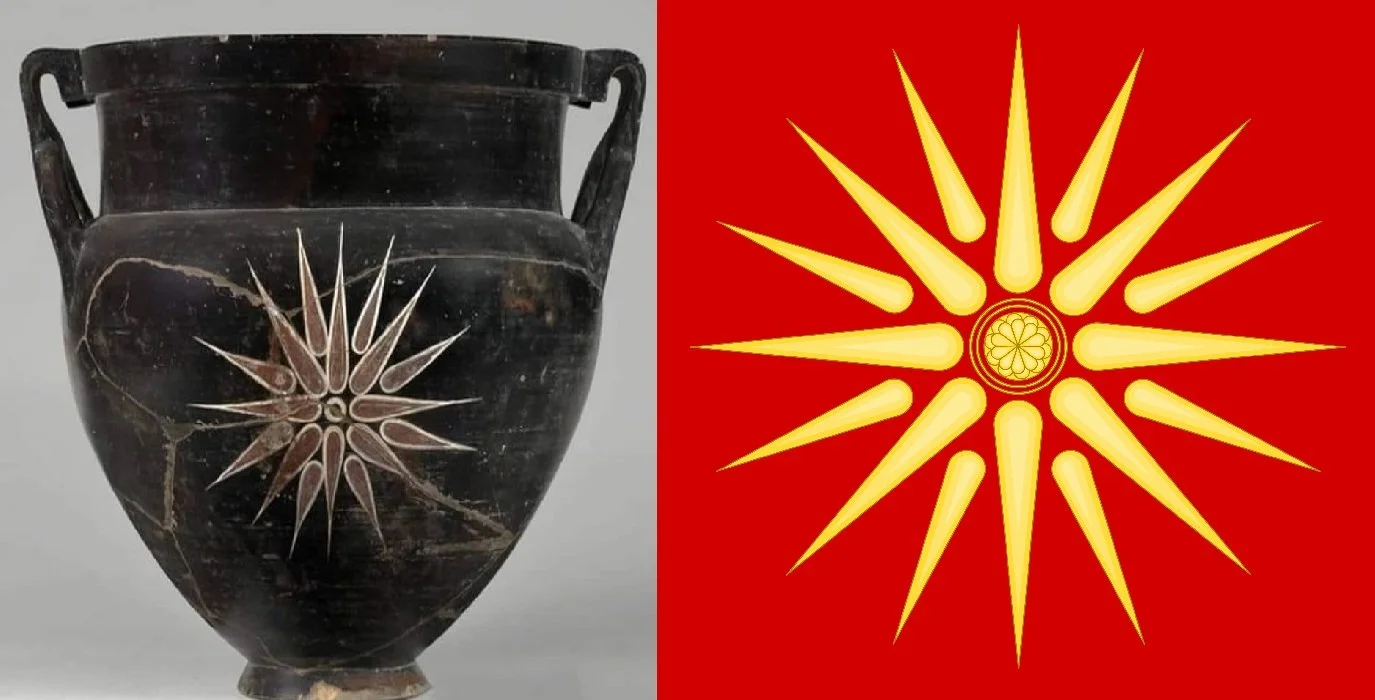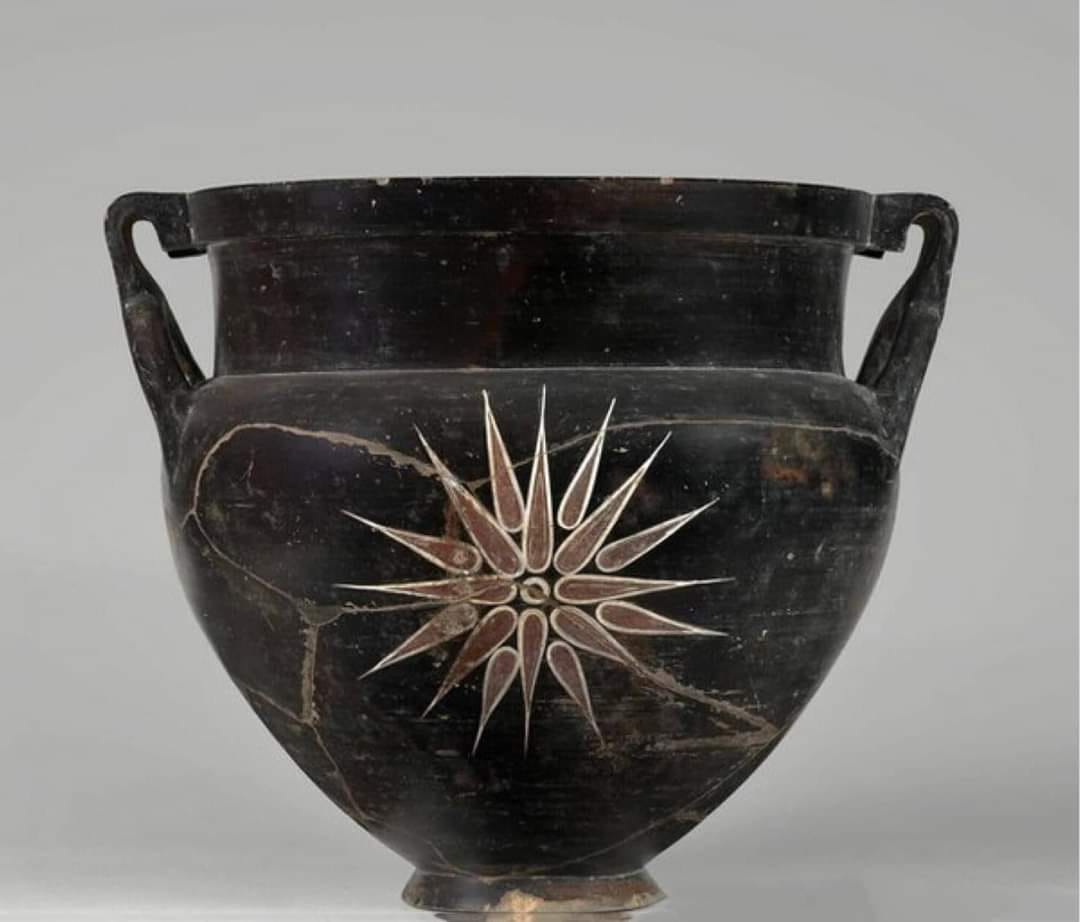Located within the hallowed halls of the Louvre Museum in Paris, a remarkable artifact known as the Panhellenic Sun serves as a testament to the profound cultural significance of ancient Greek symbols. This stunning 6th-century BC crater, originating from Sparta, bears the Vergina Sun—a radiant emblem with 16 rays. What makes this artifact truly exceptional is that it predates the rise of Macedonia within the broader Greek world, underscoring its Panhellenic significance.
The Panhellenic Sun, located at the Louvre Museum in Paris, is a stunning 6th-century BC crater featuring the Vergina Sun with 16 rays, predating Macedonia’s rise in the Greek world.
The Vergina Sun, often associated with the ancient Macedonian dynasty, is more than a decorative motif on this artifact. In the context of this Spartan pottery, the sun’s rays take center stage, offering compelling evidence of its widespread importance long before it became synonymous with Macedonia. Its appearance here suggests that the symbol might have held a shared cultural value across various Greek city-states, particularly among the Dorian tribes of Sparta and their northern cousins in Macedonia.
A Deeper Cultural Connection
Sparta, renowned for its military prowess and austere lifestyle, shared many cultural traits with other Dorian settlements. The presence of the Vergina Sun on this piece hints at a deeper connection between the two regions, suggesting that the symbol may have represented not just a local or Macedonian identity but a broader Panhellenic unity. This crater offers a rare glimpse into the interconnectedness of the ancient Greek world, where symbols and ideas traveled across city-states, fostering a shared sense of identity among the Hellenes.
The Panhellenic Sun: A Modern Symbol
Today, the Panhellenic Sun is internationally recognized and protected as a Hellenic symbol under the auspices of the World Intellectual Property Organization (WIPO). This protection affirms its enduring significance, not only as an ancient cultural artifact but also as a symbol of Greek heritage. The sun, with its 16 rays, has transcended its historical roots to become a universal emblem of unity, pride, and connection to the ancient Greek world.
Housed in the Louvre Museum, this Spartan crater remains a poignant reminder of the cultural and symbolic richness of ancient Greece. It speaks not only to the artistic achievements of the time but also to the shared symbols that helped define the Hellenic identity across the ages. The Panhellenic Sun continues to shine brightly, representing both the past glory and the lasting legacy of the Greek world.








